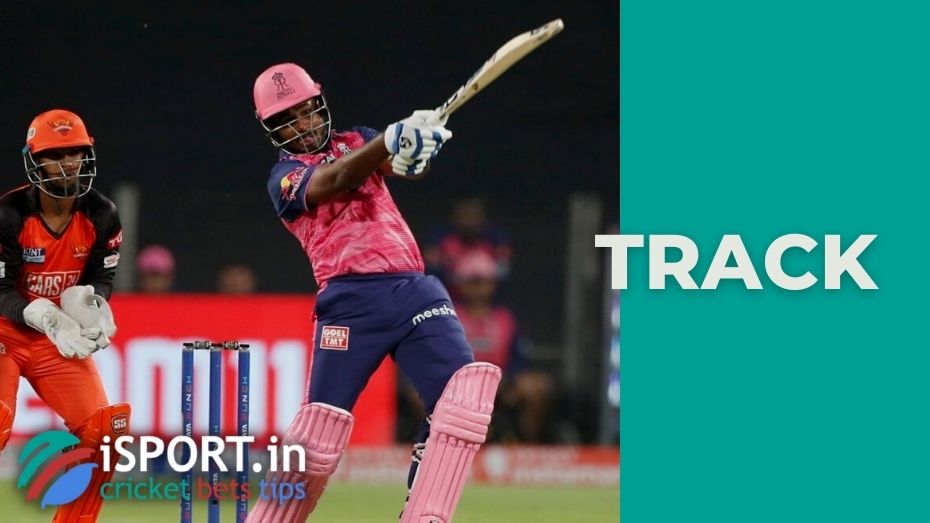Track in cricket - what is it?

A cricket field is a space in a stadium where players play their matches. It is generally oval with a diameter ranging from 450 to 500 feet. The field is divided into several parts. The main one is pitch, where the main action of the game takes place. Another name for pitch is the track.
What is the track (or pitch) in cricket?
In many countries such as India and England, cricket is a real religion. And the 22-yard pitch in the center of the field, called the pitch, or track is of great importance in this game.
For example, the innings result is largely influenced by the state of the field when it is the turn of the team to take on the role of pitcher or batter. Moreover, the track can cause a team to lose or win. This is because of the bowler serve when the ball hits the pitch and bounces towards the batsman. How exactly the ball bounces is influenced by how the bowler is serving and by what soil the ball is in contact with. To a lesser extent, the surface affects the speed of jogging, the work of fielders and the batsman.
- Unlike the field, the size and shape of which is not strictly defined, the requirements for the track are clear: 22 yards long and 10 feet wide. There are wickets on both sides. The main action of the game takes place between them.
- The field has special markup, which is done using creases. There are three types of them in total: bowling creases, popping creases, return creases. All lines must be white.
- Bowling crease is the line that marks the end of the pitch and is in line with the wicket, and is 8 feet 8 inches long.
- Popping crease is a line that is 4 feet in front of the bowling crease and is parallel to it. It must be at least 6 feet long on either side of the imaginary line that connects the opposite two middle stumps.
- Return creases are lines perpendicular to the popping creases that are 4 feet 4 inches on each side of the imaginary line that connects the opposite two middle stumps. Return crease starts with popping crease and must be at least 8 feet.

Interesting facts about the track (pitch)
Since the track itself and its condition are extremely important for the conduct of the match and its result, serious demands are made on the surface, its preparation and use during the match.
- Surface preparation for play is an important process. If the track is poorly prepared, the home team may be penalized, and even the game may be postponed. It is up to the referees to decide how much the surface is ready for play. Responsible for the preparation of the Ground Authority, during the match the referees monitor the state of the track.
- Before the match, the captains of both teams are given the opportunity to inspect the track to build a strategy for the game and choose the most suitable players for playing on the proposed surface.
- During the game, the surface remains untouched, with some rare exceptions, such as gardening, even if it lasts for several days. Also, the track’s surface can be changed by the judges’ decision and with the consent of the team captains if the continuation of the game under existing conditions may be dangerous or meaningless.
- Important for the course of the game are also such characteristics of the surface as the color of the soil and its composition, elasticity, how much the soil is subject to wear and how much it can absorb moisture.
- There are three main types of track: green, dusty, dead.
- Dead pitch (or dead track) is a level surface that is dry and free of grass. This surface is especially useful for the player who plays in the batsman position because it is extremely difficult for fast bowlers and spinners to play on it. In addition, wickets are difficult for bowlers to take on this course. As a result, the game’s effectiveness on this field in terms of the number of runs is quite high.
- Green pitch (or green track) is, as the name implies, a grassy area. As opposed to dead pitch, it is ideal for fast bowlers and spinners. Due to the nature of the surface, it is ideal for making precise and confident pitches. Such coverage is most often found in England, South Africa and Australia.
- Dusty pitch (or dusty track) – is the softest among others and the most pliable. Spinners have an advantage here. Teams where most bowlers are proficient, tend to win on the dusty track. Most pitches in India are like that.
- Artificial turf is almost never used in professional cricket. It can only be found in amateur matches.
Track in cricket means the same as pitch, but the term is used much less frequently.
